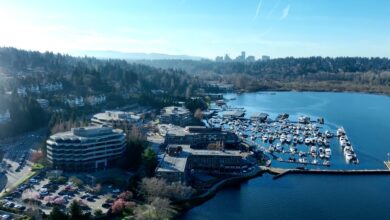Article: Generative AI is redefining every fabric of work: Oracle’s Deepa Singhal

The adoption of AI in HR functions continues to animate the discussion around the future of HR technology. From the significant gains in productivity to the potential to boost workplace innovation, it is becoming central to the conversation on impactful HR.
However, integrating AI comes with challenges like employee resistance and data privacy concerns, which require robust data governance and gradual implementation strategies to ensure smooth adoption and effective change management.
In this extensive interview, Deepa Param Singhal, Vice President, Applications, Oracle India, shares how companies can begin their journey and which innovations are likely to shape the future of HR.
1. How do you see emerging technologies like Generative AI transforming the landscape of Human Resources? What are some key priorities for the HR function?
Generative AI is redefining every fabric of work to enhance human creativity and productivity such as data-driven decision-making, automating internal processes and optimising operational efficiency. The adoption of Generative AI in human resources and recruitment functions has the potential to lead to massive productivity gains.
Many organisations across industries are transitioning from outdated HR frameworks to cloud-based applications to minimise the burdens of manual record-keeping and data management. For instance, Generative AI is streamlining HR functions when integrated into cloud-native HR solutions, such as payroll processing and candidate screening, leading to increased efficiency and a strategic focus on employee development. Additionally, sectors such as business services, financial services, education, retail, and healthcare are among those that are majorly impacted by the advent of Generative AI.
However, the integration of technology into HR operations comes with challenges, including employee resistance and data privacy concerns, which organisations must address systematically. Robust data governance measures are critical to address privacy and security concerns. Gradual implementation phased rollouts and effective change management can help prepare the workforce for AI integration.
2. According to the McKinsey report, Generative AI has the potential to boost worker productivity by up to 50%. How do you envision this improvement in productivity playing out in real-world HR scenarios?
Generative AI is enabling employees, managers, and HR leaders to be more efficient by saving time and allowing them to focus on more meaningful, strategic initiatives that drive greater business value. o Given its immense capability to evolve the efficacy of work, its adoption has the potential to accelerate India’s growth trajectory.
Generative AI’s primary impact can be felt in administrative tasks, where it can enhance efficiency by automating mundane routine tasks like reporting, data management, and record-keeping. It also helps recruiters and hiring managers to effectively identify the right candidate from the talent pool and author job descriptions that resonate with the top talent.
HR professionals can also leverage generative AI tools use cases such as goal creation, performance summaries, craft targeted recruitment plans, and generate job descriptions for perfect matches, with plans to deliver hundreds more use cases in the future. When it comes to reskilling and learning programs, Generative AI can create hyper-personalised training modules according to an individual’s learning pace, ensuring the successful implementation of the program and massive productivity gains.
3. Given the flux in the macro-economic environment and increased change in the skill landscape, What strategies do you recommend for building a talent pipeline that thrives?
Artificial intelligence (AI) is fundamentally changing the way we interact with the world. This presents both opportunities and challenges for organisations that want to reap the benefits of AI technologies. This big shift will demand organisations develop a more Generative AI–literate workforce. To stay on top of the talent market, organisations must start developing excellent talent management strategies that allow them to reward the experiences of AI–literate workers they hire and hope to retain in the future.
To build a resilient talent pipeline, organisations should embrace agile recruitment strategies, enabling organisations to adjust to evolving market conditions and skill demands. CHROs should prioritise the continuous assessment of their current and future skill needs to identify gaps and anticipate emerging requirements. Additionally, upskilling and reskilling initiatives play a crucial role in ensuring that the workforce remains adaptable and equipped with the latest skills.
4. How is Oracle synergising workforce excellence using the power of Generative AI, and what specific initiatives or technologies are driving this synergy?
Oracle is committed to ongoing research and development to enhance its AI capabilities continually. This dedication to innovation ensures that Oracle Fusion Cloud Applications solutions stay at the forefront of AI technology, enabling HR teams to leverage the latest advancements to drive efficiency and effectiveness. The partnership between Cohere and Oracle brings generative AI solutions to enterprises.
Oracle reached out to its customers to ask them how willing they were to adopt some of these features. Surprisingly, about 87% of them said they’re very eager to adopt Generative AI features. NASSCOM estimates that about 4,16,000 people are working in AI and data science in the country, but there is demand for another 2,13,000. This is the adoption rate at which Generative AI is spreading, and it all starts with customers. Oracle’s leading AI infrastructure and comprehensive portfolio of cloud applications create a powerful combination for customer trust.
By integrating generative AI across its portfolio of cloud applications—including ERP, HCM, SCM, and CX—Oracle enables customers to take advantage of the latest innovations within their existing business processes. We have been in the AI field for a long time now. All our applications already had AI.
For our Fusion Cloud HCM portfolio, we have developed innovative capabilities with embedded AI, ML, and data analytics capabilities that are built into all our offerings. For example, Oracle ME is a recent innovation that is a cloud-enabled solution, and it brings all employee engagement and employee success activities onto a single-multidimensional platform, giving step-by-step instructions to help employees navigate HR processes.
Within the Oracle ME, Oracle Grow simplifies the path to growth by integrating learning, skill development, and career mobility, amplifying both individual and business success. Moreover, we are constantly working toward adding more capabilities to help business leaders and HR leaders amid the fast-evolving market dynamics. Last week, Oracle launched a new AI-powered Skills solution within Oracle Grow, part of the Oracle ME employee experience platform, to help leadership teams maximise talent potential and align upskilling with business priorities.
5. Finally, what advice would you give to HR professionals and business leaders looking to leverage technology to drive excellence in their organisations?
The HR landscape has been rapidly evolving, and there are several trends that are likely to outperform in 2024 and beyond. When it comes to driving excellence in their organisations there’s a whole other set of practices for HRs that have emerged. Before selecting or implementing a technological solution, CHROs should deeply understand the unique challenges and pain points associated with organisational processes. While implementing new tools, they should prioritise user-friendly interfaces to ensure a high adoption rate and maximise the benefits of technological investments.
Advanced technologies driven by the hybrid workplace will continue to remain significant in the coming year as well, and CHROs will play a greater role in tying the organisation and employees together despite working from different locations.



